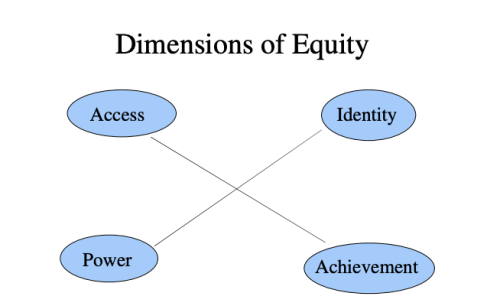2019 Year of Reflective Teaching - April 2019
As we think about course design it is important to consider equitable and inclusive pedagogies, especially as UC Davis classrooms become more and more diverse.
Connecting reflection with inclusive pedagogy and equity
In a recent article featured in The Chronicle of Higher Education, entitled The Case for Inclusive Teaching, Kevin Gannon explains that inclusive pedagogy ”is a mind-set, a teaching-and-learning worldview, more than a discrete set of techniques” that adopts specific practices. “Inclusive teaching asks us to critically examine not just the way we teach on a day-to-day basis, but the prep work and organization we do before the course begins. Does our course design reflect a diverse array of identities and perspectives? … What am I telling students about how knowledge is produced in my field, and more important, about who is producing it?”
As committed educators that value inclusive pedagogy, we thus need to ask deep questions about how we intentionally plan for and practice equity and inclusion in our classroom.
The goal of teaching for equity and inclusion is to (re)design a course that will accommodate a diversity of student learning needs and abilities, will respond to and value a variety of student academic and cultural backgrounds, and will support a wide array of student identities. To achieve this, we should be mindful of three key dimensions:
1) the incorporation of inclusive, instructional approaches and practices,
2) the creation of a supportive classroom climate (in terms of the learning context and the social relationships afforded by it), and
3) the incorporation of equity and inclusion in the disciplinary content.
These dimensions can inform our choices in how we support students’ sense of belonging in the classroom, what role models and examples we include in our content, and how we communicate to students that diversity is valued in our class.
Dimensions of equity
Rochelle Gutiérrez (2009) offers a very useful framework to explore equity for mathematics education that can be applied to many disciplines. Her model is comprised of four key factors: access, achievement, identity, and power (see Figure 1 below).

Adapted from Gutierrez (2009)
- The access factor relates to giving all students access to the resources needed to learn the discipline (e.g., instructors, curricula). What issues could students face in accessing your materials? How is the use of academic language in your discipline accessible for English learners and first-generation students? Have you designed your course according to Universal Design for Learning principles?
- The achievement factor relates to giving all students opportunities to achieve the student learning outcomes. What tools are you using to measure achievement? Are they appropriate ways for students to demonstrate their learning?
- The identity factor relates to giving all students the opportunity to enact their social identities (e.g., race, gender, social class) in class and employ them as conduits for learning. Are the course materials free of implicit cultural assumptions, stereotypes, and other biases? Are the materials inclusive of your students’ identities?
- The power factor relates to paying attention to how power is distributed between the instructor and students, among the students, and between the students and the content, and considering who benefits and who gets empowered, or gets included or excluded, in teaching and learning the discipline. How do students relate to other students in class? Are certain students or groups of students not participating as actively? How can these social dynamics be addressed to support everybody’s learning?
The identity and power factors are, according to Gutierrez, the most transformative ones, as they can engage both instructors and students in critically reflecting about the content, about how a discipline creates knowledge, and about how a discipline is taught.
These resources, considerations of access, achievement, identity and power, can help us think critically about (re)designing inclusive and equitable learning environments where all our students can succeed.
References
Gannon, K. (2018, February 27). The case for inclusive teaching. Chronicle of Higher Education. Retrieved from https://www.chronicle.com/article/The-Case-for-Inclusive/242636
Gutiérrez, R. (2009). Framing equity: Helping students “play the game” and “change the game.” Teaching for Excellence and Equity in Mathematics, 1(1), 5–7
The Mathematical Association of America (2018). MAA Instructional Practices Guide. Retrieved from https://www.maa.org/sites/default/files/InstructPracGuide_web.pdf
